When making a diamond purchase, it is crucial to thoroughly evaluate every aspect of the stone, as each element contributes to its beauty and value.
While cut quality and carat weight are significant factors, there are two additional essential aspects of a diamond’s quality. This leads us to the question: When comparing diamond color and clarity, which factor holds more importance?
Both color and clarity significantly influence the stone’s aesthetic appeal and overall appearance. However, it is important to note that these factors should not be the sole considerations when selecting a diamond.
In this comprehensive article, we have covered all the essential information about diamond color and clarity, as well as other crucial factors that should be taken into account when purchasing a diamond.
Without any further delay, let us delve into the details and explore everything you need to know before buying a diamond.
DESIGN YOUR OWN ENGAGEMENT RING: START WITH A SETTING OR START WITH A DIAMOND. IT’S REALLY UP TO YOU!
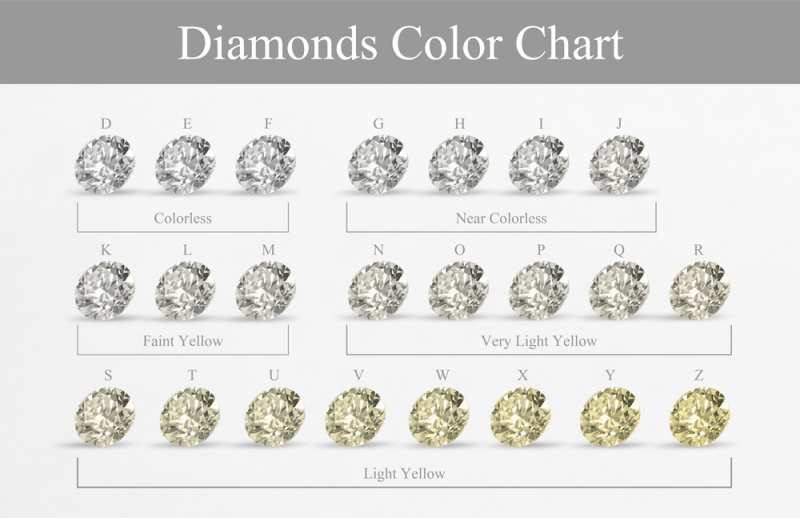
What Is Diamond Color?
A diamond’s color refers to its degree of clarity or presence of yellow hue. The highest quality diamonds exhibit complete colorlessness, while lower quality stones may display a noticeable yellow tint.
Diamond color is assessed using the GIA color scale, which ranges from D (colorless) to Z (yellowish or brown). Between D and Z, there are several grades that span from nearly colorless to slightly yellow.
When considering a diamond purchase, the color factor should not be disregarded, as it can significantly impact the price of the gem. Choosing the appropriate color for your requirements can lead to potential cost savings without compromising the jewelry’s visual appeal.
Distinctively colored diamonds, such as pink, yellow, or blue, are available in the market and generally command higher prices than other diamonds. However, a hint of yellow in a diamond is often viewed as less desirable. This is because even a subtle presence of color reduces the gem’s ability to reflect natural light, making it appear less brilliant. Thus, diamonds that are more white or colorless are considered more radiant and valuable.
Rare colorless diamonds rank much higher on the color grading scale compared to stones that possess even a slight hint of yellow.
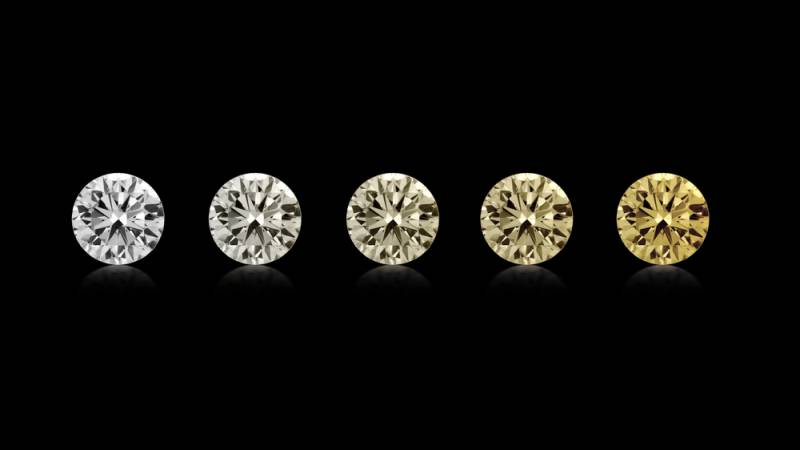
Does The Color Grade Matter When Buying A Diamond?
While diamond color does hold significance, there is a certain threshold to its importance. When considering the diamond’s 4 C’s (carat weight, cut, clarity, and color), carat and cut are typically prioritized for maximum impact.
In terms of color, there is a point at which you can visually determine whether a diamond is colorless or possesses a noticeable yellowish tint. It is generally advisable to avoid purchasing a diamond that exhibits a visible yellowish tint when observed with the naked eye.
However, it’s important to note that the perception of clarity versus a yellowish tint can vary depending on the diamond’s shape and the style of the ring in which the stone will be mounted. Once the diamond appears clear enough to your satisfaction, there may not be much to gain from investing in a higher color grade.
It is essential to remember that purchasing a diamond involves making trade-offs. If you choose to allocate more of your budget towards the color grade, you may need to compromise on factors such as brilliance, size, or clarity, which is generally something you would want to avoid.
In essence, finding a balance among the 4 C’s is crucial, and once the diamond meets your desired level of clarity, spending more on a higher color grade may not yield significant benefits in terms of overall appearance.
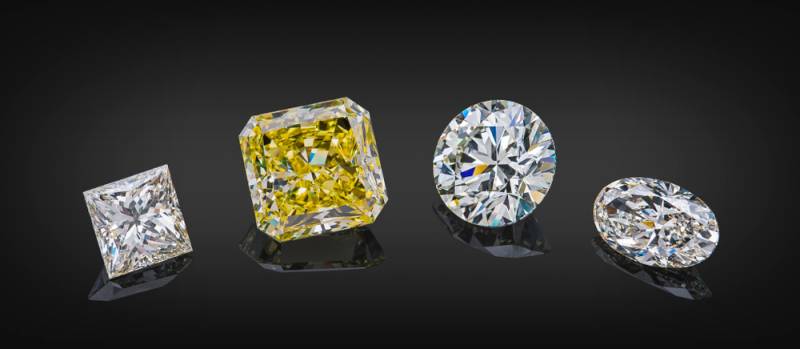
Several Things To Remember About Diamond Color
Here are some key points to remember about diamond color:
- The absence of color is often a crucial indicator of good value when it comes to diamonds.
- The color grade of a diamond should always be assessed by a professional grader.
- The grade and value of diamonds vary between colorless and colored stones.
- Diamond colors are graded on a scale from D to Z, with most jewelry-grade diamonds falling within the range of D to M.
- The setting of the ring can affect how the diamond’s color is perceived.
- It’s important to note that the difference between color grades is often negligible and difficult to perceive with the naked eye.
- However, when diamonds of different color grades are viewed side by side under bright light and magnification, the difference can be noticeable.
- Opting for the highest possible color grade is not necessary unless budget is not a constraint. A well-cut diamond in the G or H color range can look equally beautiful when set in jewelry.
- The shape of the diamond and the metal used for the setting can impact the choice of color grade. For example, round brilliant cuts are good at hiding color, while emerald cuts may not be.
- Choosing a setting that complements the color and shape of the diamond is important. Some metals, like rose or yellow gold, can better mask faint yellow colors compared to white gold or platinum.
- Like the cut quality, carat weight, and clarity, diamond color is just one crucial factor to consider when purchasing a diamond. Balancing color with the other aspects of diamond grading is essential for obtaining the best value.

What Is Diamond Clarity?
Diamond clarity is a qualitative measure of a diamond’s visual appearance. It refers to the presence of blemishes and inclusions within the stone. Generally, the fewer imperfections a diamond has, the higher its clarity grade.
The clarity of a diamond plays a significant role in its price. However, it’s worth noting that many of the imperfections that affect a diamond’s clarity grade are not visible to the naked eye. This means that there is some flexibility when it comes to choosing a diamond based on clarity.
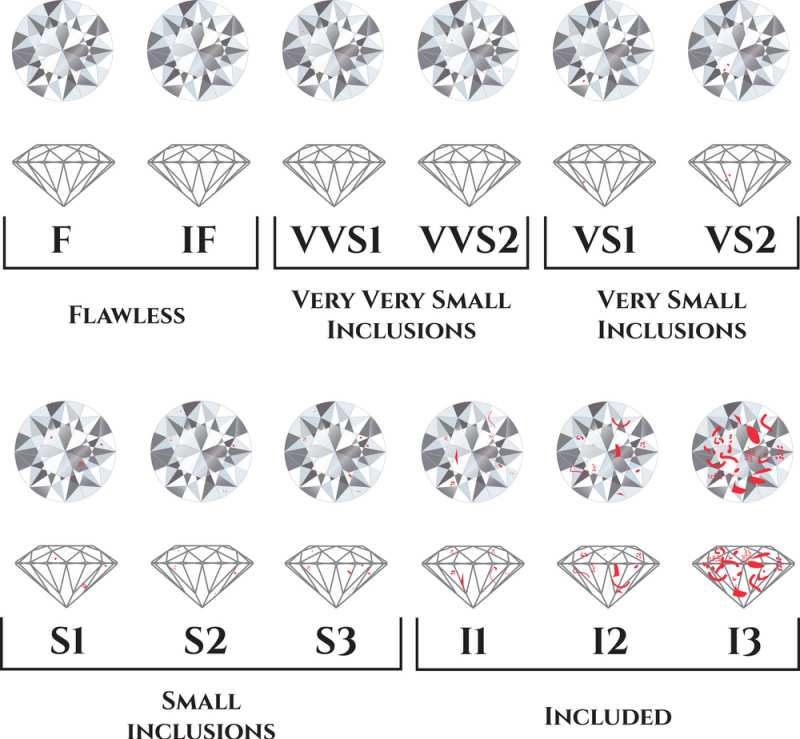
What Is A Diamond Clarity Chart?
To assist diamond buyers in understanding the clarity of a diamond, grading entities like the GIA and AGS utilize clarity charts to assess diamonds based on their overall appearance. Each diamond is assigned a clarity grade within a specific scale.
The diamond clarity scale ranges from IF (Internally Flawless) to I, with each grade having its own subgrades that provide further details about the visibility of imperfections within the diamond.
Here is an overview of the different clarity grades:
- Internally Flawless (IF): Diamonds with no internal or external imperfections, making them extremely rare to find.
- Very Very Small Inclusions 1 (VVS1): Inclusions in diamonds with this grade are not visible under 10x magnification.
- Very Very Small Inclusions 2 (VVS2): Inclusions in diamonds with this grade are sometimes barely visible under 10x magnification and can be difficult to notice.
- Very Small Inclusions 1 (VS1): Diamonds with VS1 clarity have inclusions that are barely visible under 10x magnification, and it may take a few seconds to locate the imperfections.
- Very Small Inclusions 2 (VS2): Inclusions in diamonds with VS2 clarity are almost always detectable under 10x magnification. They may be located in challenging spots, but are generally noticeable under magnification.
- Small Inclusions 1 (SI1): SI1 clarity inclusions are easily detectable with a jeweler’s loupe. With most diamond shapes, SI1 inclusions are usually clean to the naked eye.
- Small Inclusions 2 (SI2): SI2 clarity inclusions are easily noticeable under 10x magnification. With step cuts like Asscher and Emerald cuts, SI2 inclusions may be visible to the naked eye.
- Inclusions 1 (I1): Diamonds with an I1 clarity grade have more obvious inclusions. Even on brilliant cuts, most I1 inclusions can be detected by the naked eye.
Understanding the clarity grades allows buyers to assess the visibility of imperfections within a diamond and make informed decisions based on their preferences and budget.
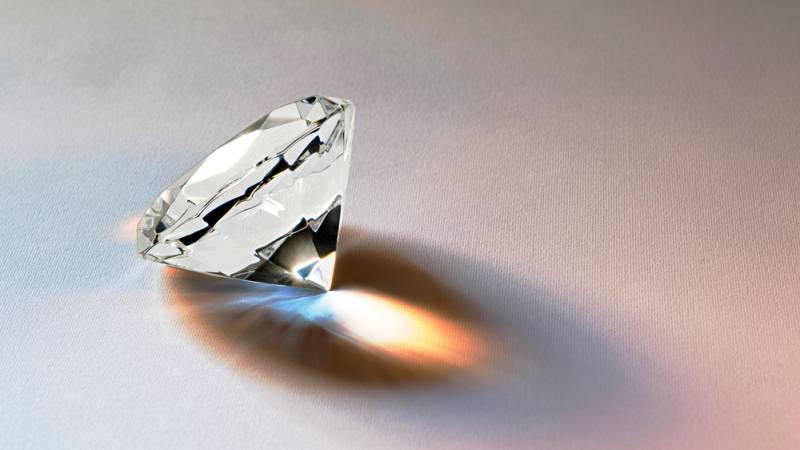
How Are Clarity Grades Determined?
Natural diamonds are formed deep beneath the Earth’s crust, at depths ranging from 130 to 200 kilometers. During their creation, they endure extreme temperatures of up to 1200 degrees Celsius.
Despite taking billions of years to form, diamonds rarely emerge in perfect conditions. They often contain surface blemishes and internal inclusions of varying degrees.
When assessing a diamond’s clarity on a specific scale, experts typically examine its appearance under a microscope while it is face up. They use high magnification to identify any imperfections present.
Five factors are crucial in grading a diamond’s clarity and evaluating its position on the diamond clarity chart. These factors are:
- Size: The size of the inclusions in a diamond plays a significant role in determining its clarity grade. Larger inclusions have a greater impact on the diamond’s overall appearance.
- Number: Grading laboratories consider the quantity of imperfections in a diamond. Even if the inclusions are small, a high number of flaws can substantially affect the diamond’s clarity and visual appeal.
- Nature: “Nature” refers to the type and depth of the imperfections visible within the diamond. This factor also encompasses other characteristics of the inclusions.
- Location: The position of the inclusions within the diamond is referred to as the location. If an imperfection is close to the center of the diamond’s table, it becomes more noticeable and significantly impacts the clarity grade.
- Relief: Relief relates to the visibility of the imperfections in comparison to the diamond itself. It indicates the contrast between the inclusion and the diamond. Higher relief can give the impression of a darker color, potentially affecting the diamond’s grading.
Considering these factors helps experts evaluate the clarity of a diamond and determine its overall quality and value.
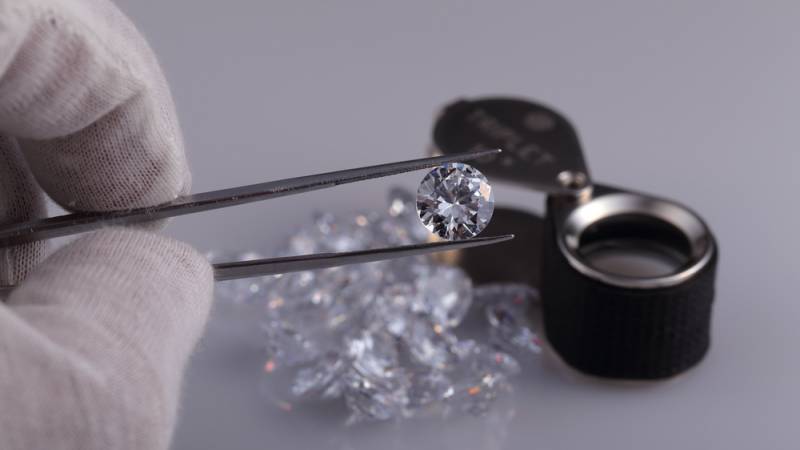
The Most Common Mistake Involving Diamond Clarity
When buying a diamond, we recommend allocating the majority of your budget towards factors that have a noticeable impact, such as carat weight and cut quality. It’s important to avoid overspending on the remaining aspects of the 4 C’s, including clarity.
One common mistake people make is purchasing a diamond with a high clarity grade that they believe will be a good investment. However, this often results in overspending on a feature that has minimal effect on the diamond’s actual appearance in real life.
The truth about diamond clarity is that many imperfections that differentiate between clarity grades, such as IF and VVS1, are completely invisible to the naked eye. This means that by focusing solely on the clarity grade instead of the diamond’s actual visual appeal, you end up allocating a significant portion of your budget to something that won’t even be noticeable.
It’s a missed opportunity because that money could have been used to acquire a larger diamond, for example. So, it’s essential to prioritize factors that truly enhance a diamond’s appearance rather than getting caught up in clarity grades that may not make a significant difference in real-world enjoyment.

Types Of Inclusions In Diamond Clarity
Although the term “inclusion” generally encompasses all imperfections within a diamond, there are distinct types of inclusions that can affect the diamond’s beauty and overall appearance.
Below, we have outlined the most common types of diamond inclusions:
- Cloud: A cluster of small pinpoints grouped together, which can give the diamond a cloudy and lackluster appearance. If a diamond contains numerous prominent clouds, it is referred to as a cloudy diamond.
- Graining: This type of internal inclusion occurs due to irregular crystal growth. Graining manifests as white, colored, or reflective lines within the diamond, resulting in a hazy appearance.
- Cavity: Surface cracks or indentations on the diamond. The color of a cavity can vary, depending on the minerals present within the diamond. Colored cavities are more noticeable and can often be observed with the naked eye.
- Feather: Tiny cracks that resemble a feathery pattern when viewed from a specific angle. Feathers can range from barely noticeable to obvious. They may appear transparent or capture light, giving a whitish appearance.
Understanding these different types of inclusions is essential when evaluating a diamond’s clarity and determining its overall visual appeal.

Conclusion
Diamond color and clarity are two important factors that greatly impact the visual appearance of a diamond.
A diamond with a low clarity grade can have noticeable imperfections and inclusions, giving it a somewhat “dirty” appearance. However, once the diamond reaches a point where it becomes eye-clean, there is no significant benefit in paying extra for a higher clarity grade.
Similarly, a diamond with a poor color grade may exhibit a yellowish tint. However, it is not necessary to spend more money on achieving flawless color. Instead, focus on finding a diamond that appears white when set in jewelry.
If you have a limited budget, it is advisable to prioritize other essential factors such as carat weight and cut quality, as they have a more noticeable impact on the overall beauty and value of the diamond.


